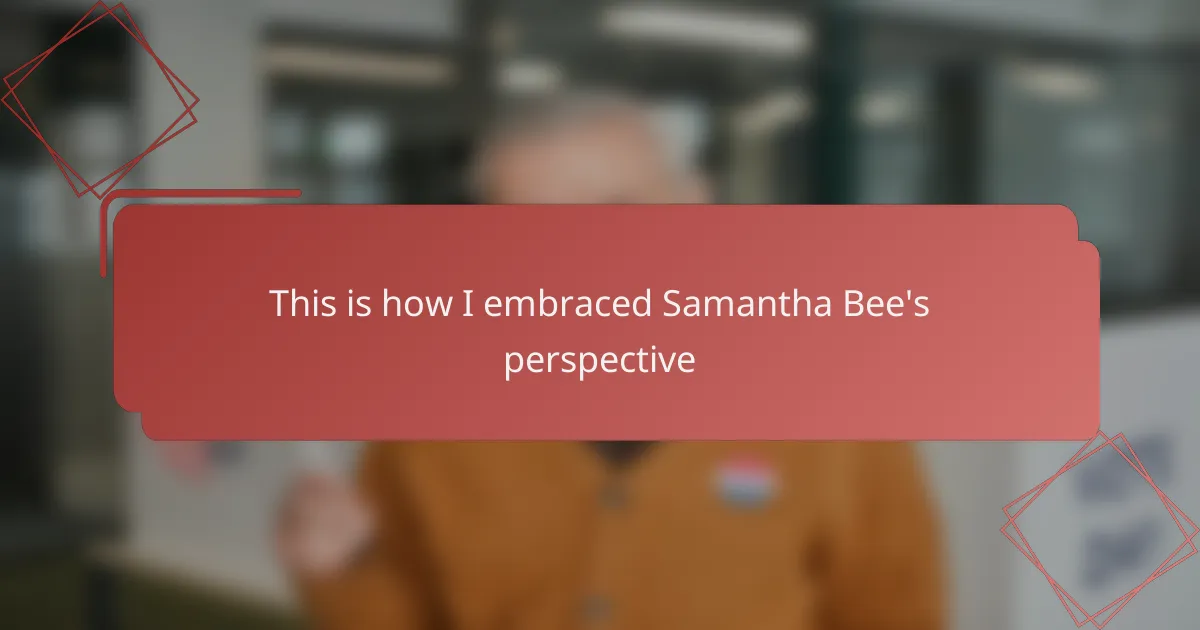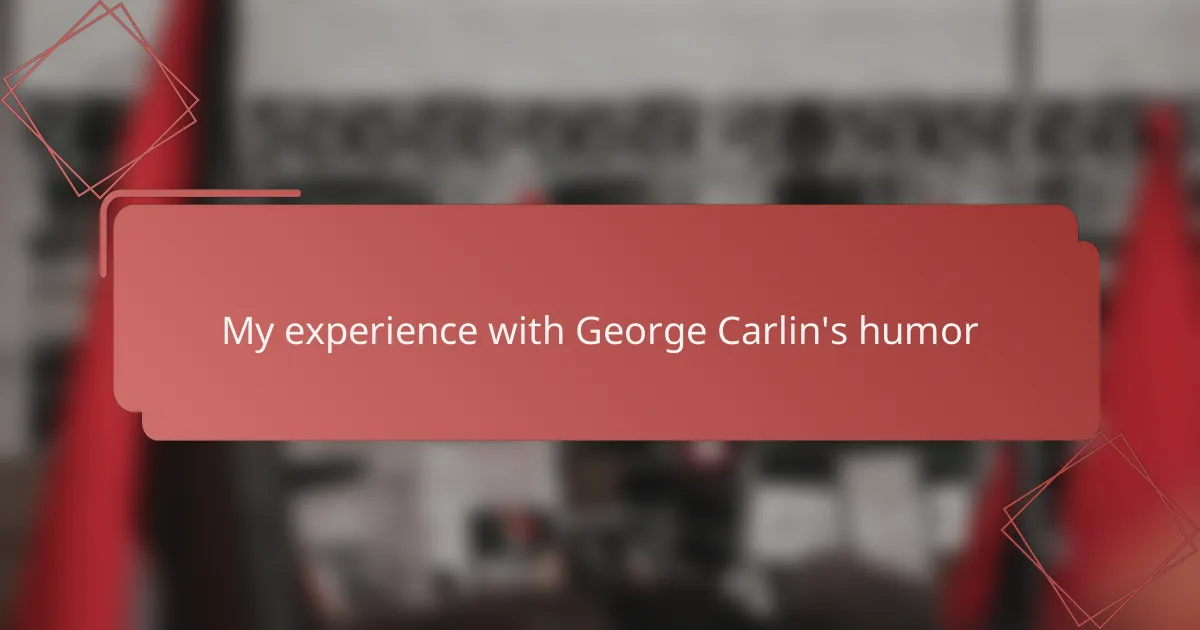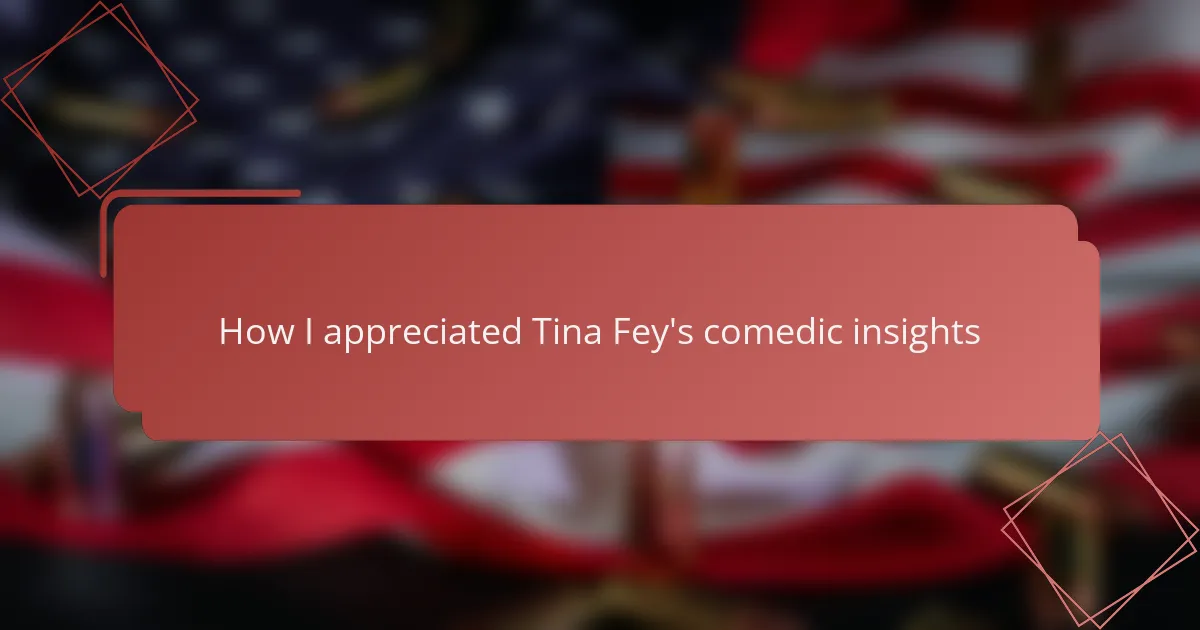Key takeaways
- Political satire utilizes techniques like exaggeration, irony, and parody to expose societal and political absurdities.
- Samantha Bee’s comedy blends humor with sharp critique, making complex issues relatable and engaging for viewers.
- Embracing satire encourages critical thinking and helps individuals question mainstream narratives while maintaining a sense of humor.
- Using satire thoughtfully can foster dialogue and reflection, transforming political discourse from divisive to constructive.

Understanding Political Satire Basics
Political satire works by holding a mirror up to society, often exaggerating flaws to reveal deeper truths. When I first encountered Samantha Bee’s work, I realized how satire can cut through the noise, making complex political issues feel more relatable and urgent. It’s this ability to blend humor with critique that makes satire so powerful and, admittedly, sometimes uncomfortable to watch.
From my experience, understanding satire means recognizing its key tools. Here’s what I’ve learned about the basics:
- Exaggeration: Amplifying certain traits or situations to spotlight absurdities
- Irony: Saying one thing but meaning another, often the opposite
- Parody: Imitating a style or figure to mock or ridicule
- Juxtaposition: Placing contrasting ideas together to highlight differences
- Social Commentary: Using humor to shed light on political and societal problems
These elements create layers of meaning, which I found both enlightening and entertaining as I engaged with Bee’s perspective.
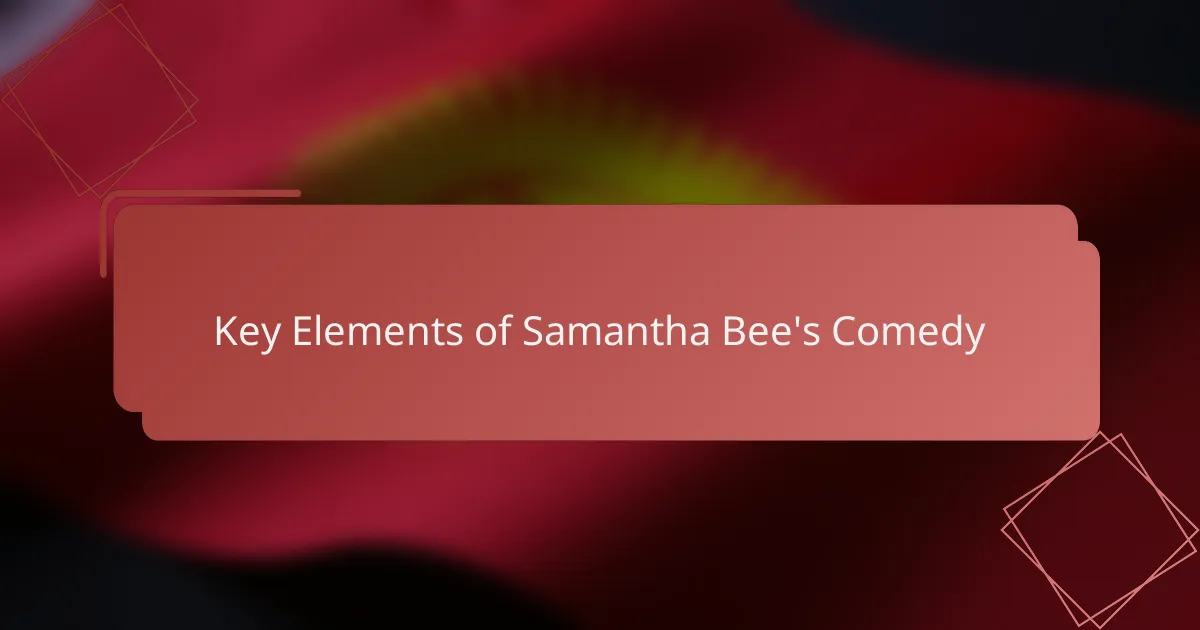
Key Elements of Samantha Bee’s Comedy
Samantha Bee’s comedy thrives on sharp wit and fearless honesty, which I found both refreshing and empowering. Her ability to tackle serious political issues with humor made me see how satire can cut through noise and provoke real thought. I remember watching one of her monologues during a tense political moment and feeling a mix of laughter and frustration—her approach made complex topics feel accessible without losing their urgency.
Her style relies on several key elements that I came to appreciate deeply:
- Bold, unapologetic commentary that calls out hypocrisy
- Clever use of irony and sarcasm to expose political absurdities
- A conversational tone that feels like a candid discussion rather than a lecture
- Inclusion of real-world examples that ground jokes in reality
- Emotional honesty that connects with the audience’s frustrations and hopes
These traits not only entertain but also invite viewers to engage critically, making the satire more than just jokes—it becomes a tool for awareness.
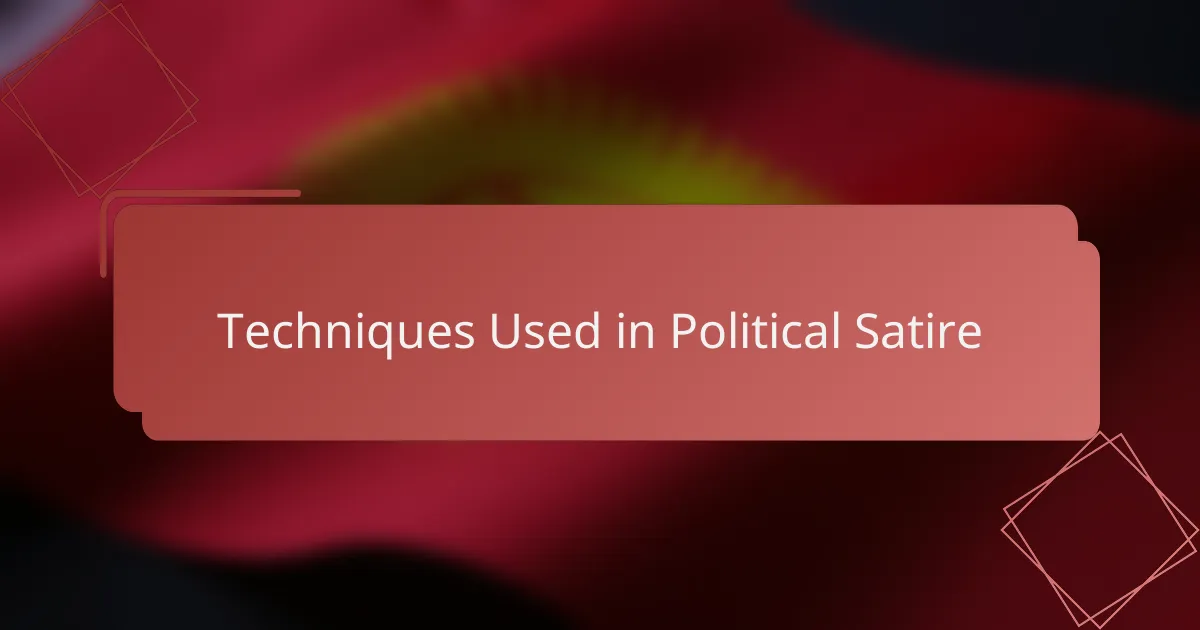
Techniques Used in Political Satire
Political satire often relies on techniques such as exaggeration, irony, and parody to expose the absurdities in politics. I noticed that Samantha Bee masterfully blends humor with sharp critique, making complex issues more approachable without losing their seriousness. Her use of sarcasm particularly stood out to me—it felt like a witty nudge that challenged me to think deeper while still entertaining.
| Technique | How Samantha Bee Uses It |
|---|---|
| Exaggeration | Amplifies political flaws to highlight the ridiculousness behind certain actions or statements. |
| Irony | Employs contrast between appearance and reality to reveal hypocrisy and contradictions. |
| Parody | Mimics political figures and scenarios in humorous ways to critique their behavior. |
| Sarcasm | Uses sharp, often cutting humor that provokes thought and emotional reaction. |
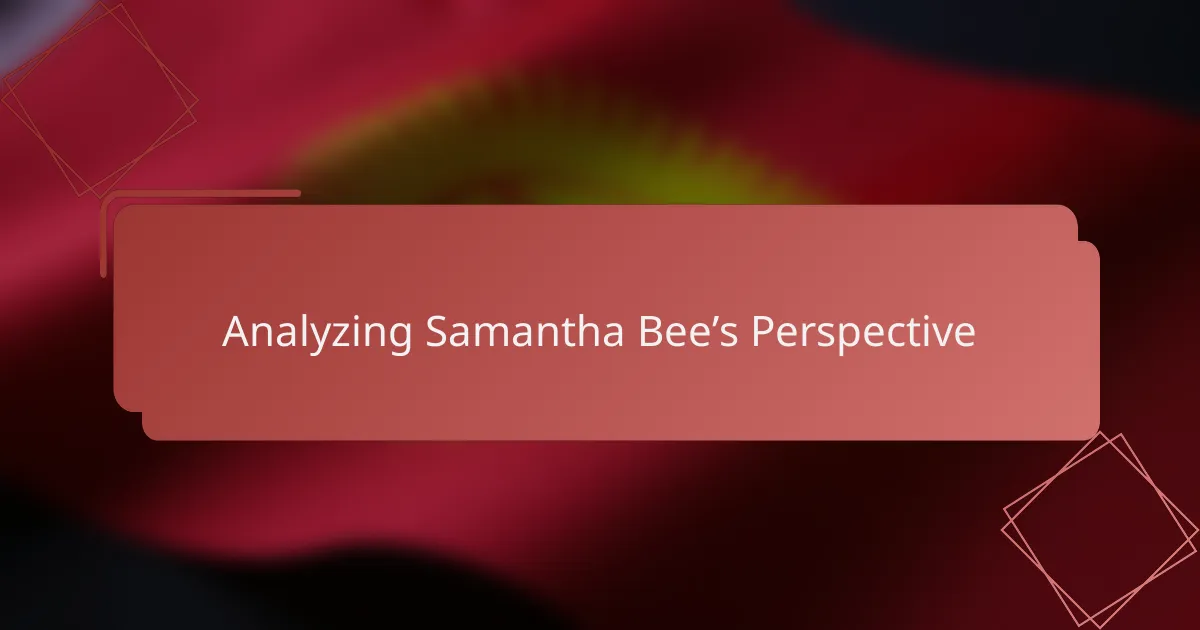
Analyzing Samantha Bee’s Perspective
Analyzing Samantha Bee’s Perspective offers a window into how she blends sharp wit with unapologetic critique to challenge political norms. From my experience watching her shows, I found her approach both brutally honest and refreshingly human, which made complex political issues accessible without losing their gravity. It’s this balance that reshaped how I view satire—not just as entertainment but as a powerful tool for social commentary.
| Aspect | Samantha Bee’s Approach |
|---|---|
| Tone | Witty, sarcastic, and unapologetically direct |
| Focus | Highlighting political absurdities and injustices with humor |
| Audience Engagement | Invites viewers to question mainstream narratives with a relatable, conversational style |
| Impact | Encourages critical thinking while entertaining, often sparking lively public discussions |
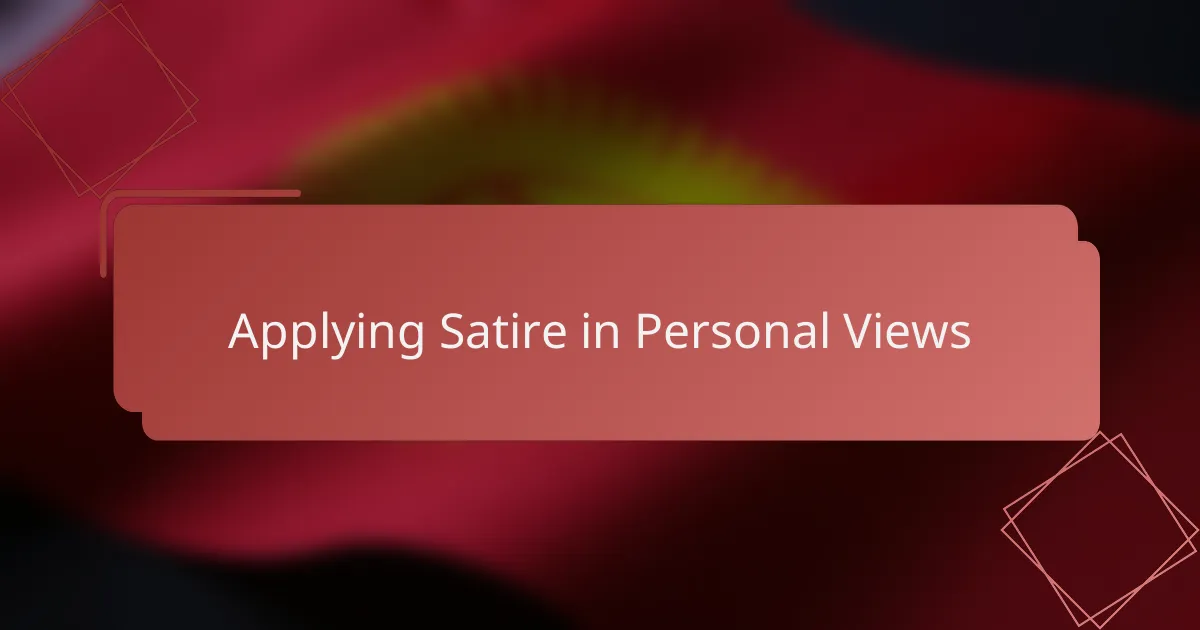
Applying Satire in Personal Views
When I first started integrating Samantha Bee’s sharp satire into my own viewpoint, I realized how humor can deepen understanding rather than diminish it. Her fearless way of tackling tough political issues encouraged me to look beyond surface-level debates and question the underlying motives and absurdities at play. I often found myself laughing out loud, even when the topics were serious, which helped me stay engaged and open to different perspectives.
In practice, I began using satire to challenge my own assumptions and biases. It wasn’t about mocking for the sake of mockery but using wit to highlight contradictions and provoke thought. Reflecting on this, I recall a particular moment when a satirical segment turned my frustration with partisan arguments into curiosity about solutions I hadn’t considered before. This shift made political discourse feel less like a battlefield and more like an invitation to think critically.
- Use humor to expose contradictions without alienating others
- Balance satire with empathy to encourage dialogue
- Employ irony as a tool to illuminate hidden truths
- Stay open to adjusting views when satire reveals new angles
- Share satirical content that prompts reflection rather than division
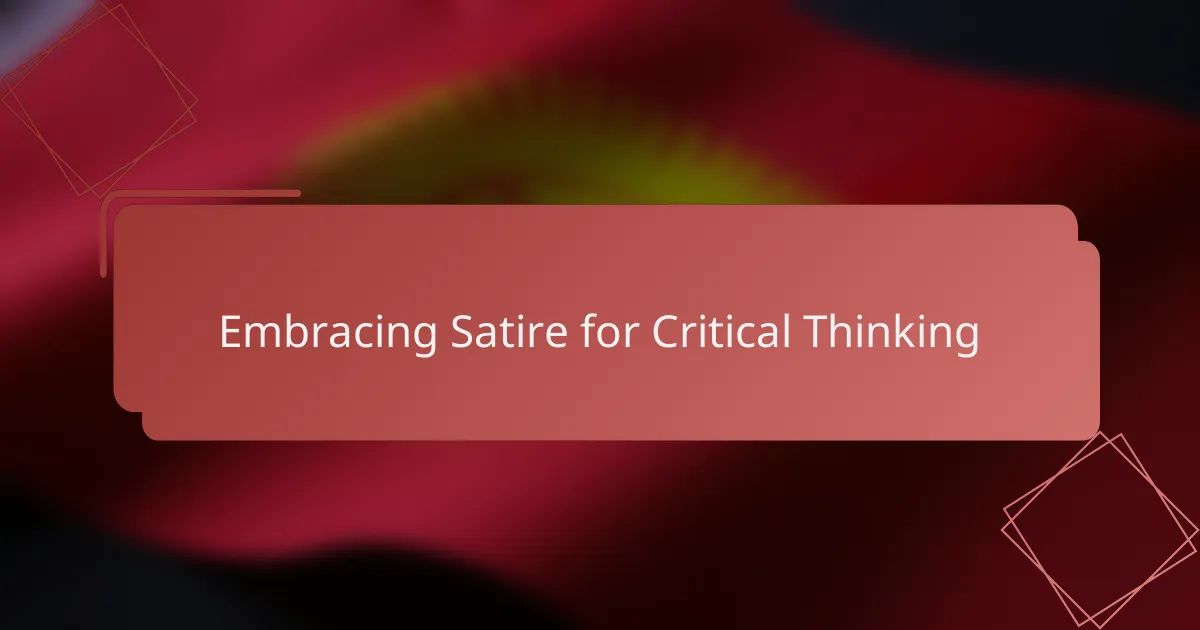
Embracing Satire for Critical Thinking
Embracing satire has been a game-changer in how I approach complex political issues. Samantha Bee’s sharp wit and fearless critique pushed me to look beyond surface-level news and question the narratives presented. It wasn’t just about laughter but about sharpening my critical thinking, making me more aware of biases and contradictions in politics.
| Before Embracing Satire | After Embracing Satire |
|---|---|
| Consumed news passively, often accepting headlines at face value. | Actively question political messages and seek deeper meaning behind statements. |
| Limited understanding of satire’s role in political discourse. | Recognize satire as a vital tool for exposing hypocrisy and encouraging civic engagement. |
| Felt overwhelmed by political complexity and polarization. | Use humor as a lens to process and analyze divisive topics thoughtfully. |
